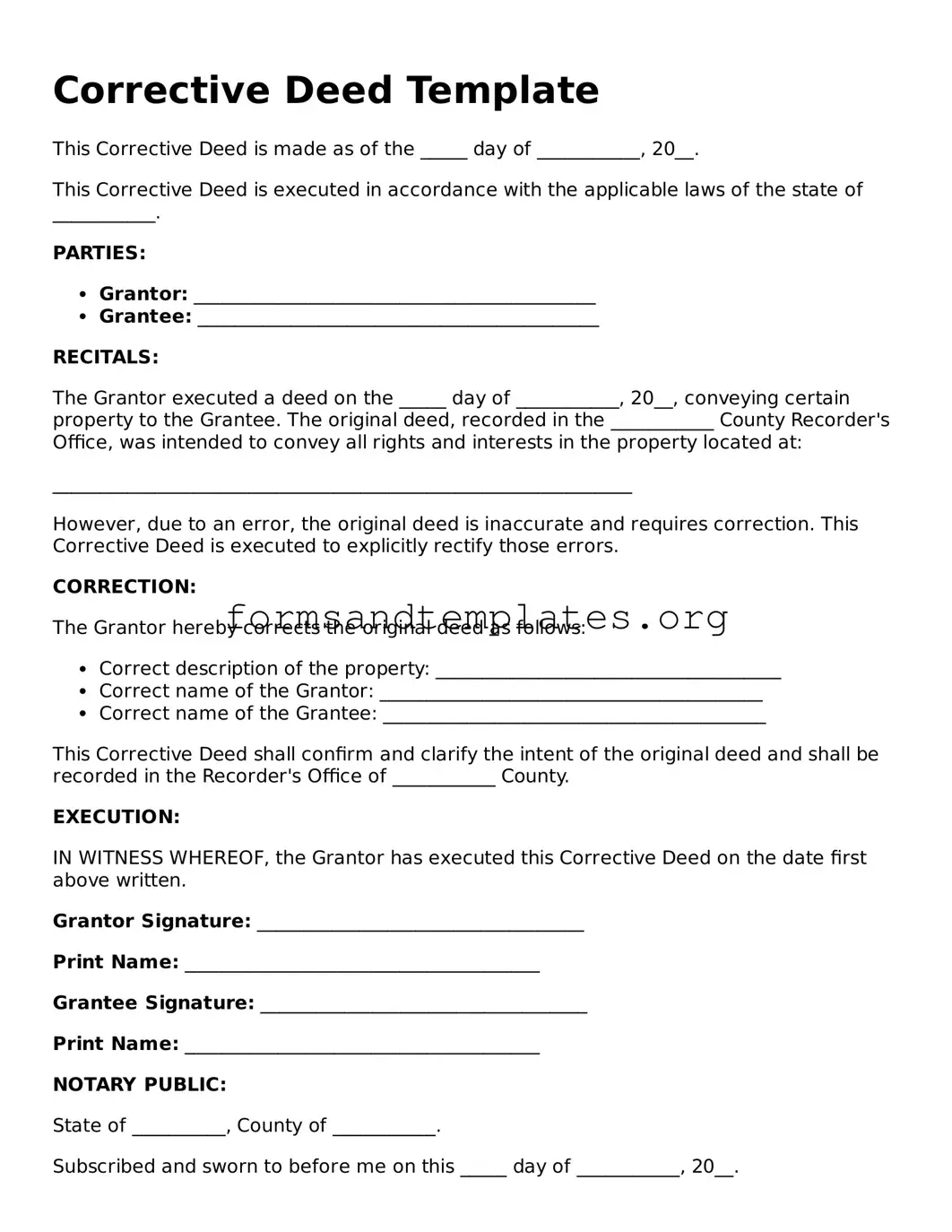Corrective Deed Template
This Corrective Deed is made as of the _____ day of ___________, 20__.
This Corrective Deed is executed in accordance with the applicable laws of the state of ___________.
PARTIES:
- Grantor: ___________________________________________
- Grantee: ___________________________________________
RECITALS:
The Grantor executed a deed on the _____ day of ___________, 20__, conveying certain property to the Grantee. The original deed, recorded in the ___________ County Recorder's Office, was intended to convey all rights and interests in the property located at:
______________________________________________________________
However, due to an error, the original deed is inaccurate and requires correction. This Corrective Deed is executed to explicitly rectify those errors.
CORRECTION:
The Grantor hereby corrects the original deed as follows:
- Correct description of the property: _____________________________________
- Correct name of the Grantor: _________________________________________
- Correct name of the Grantee: _________________________________________
This Corrective Deed shall confirm and clarify the intent of the original deed and shall be recorded in the Recorder's Office of ___________ County.
EXECUTION:
IN WITNESS WHEREOF, the Grantor has executed this Corrective Deed on the date first above written.
Grantor Signature: ___________________________________
Print Name: ______________________________________
Grantee Signature: ___________________________________
Print Name: ______________________________________
NOTARY PUBLIC:
State of __________, County of ___________.
Subscribed and sworn to before me on this _____ day of ___________, 20__.
____________________________________
Notary Public Signature
My commission expires: ___________________
